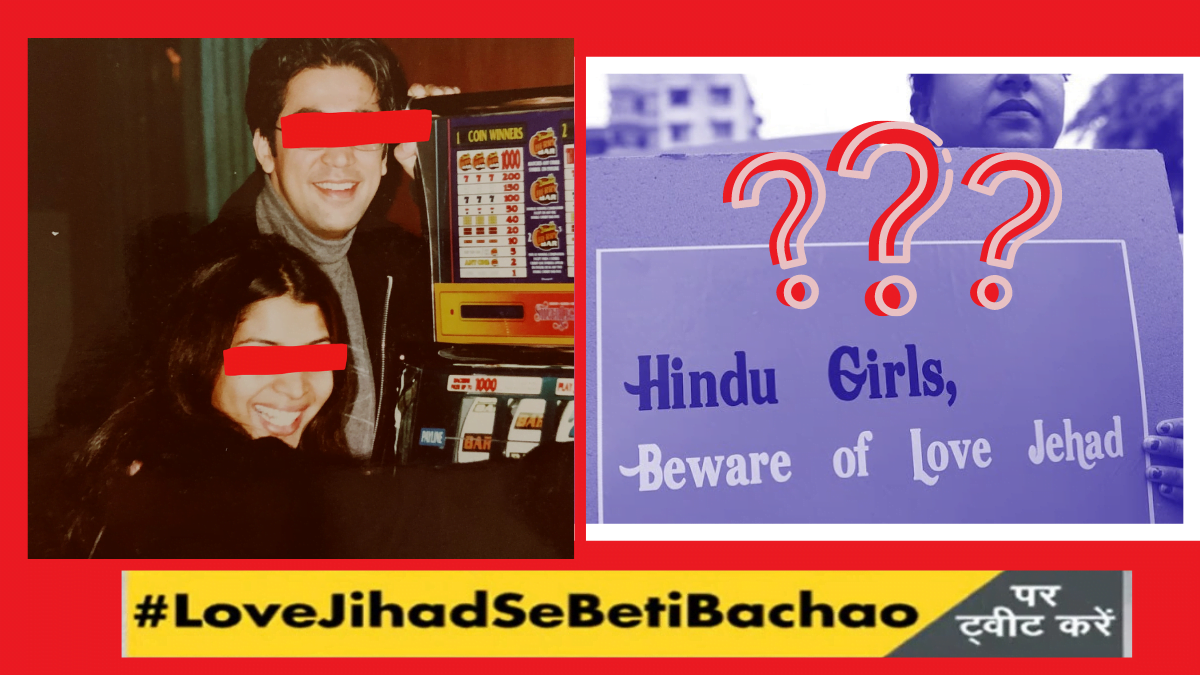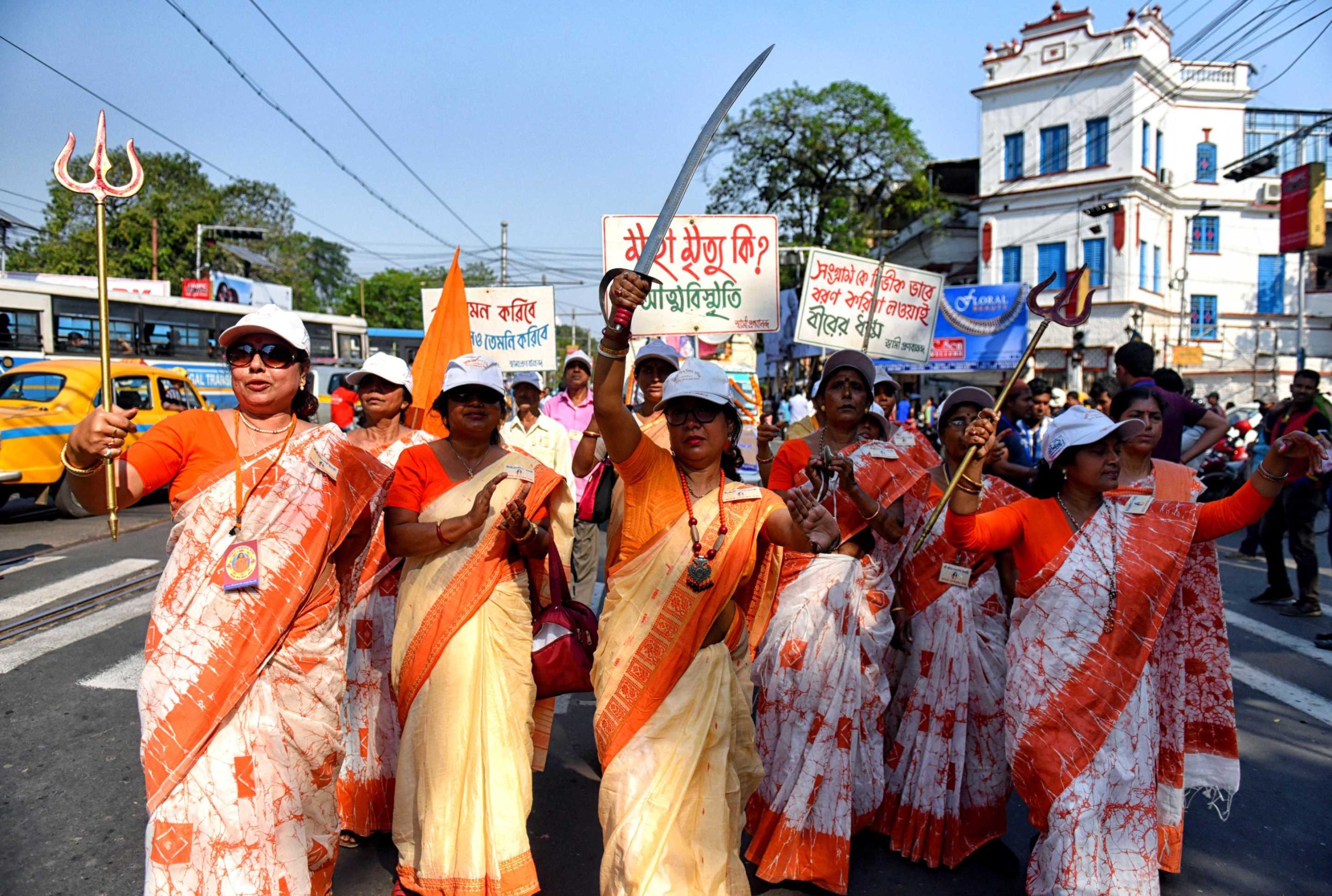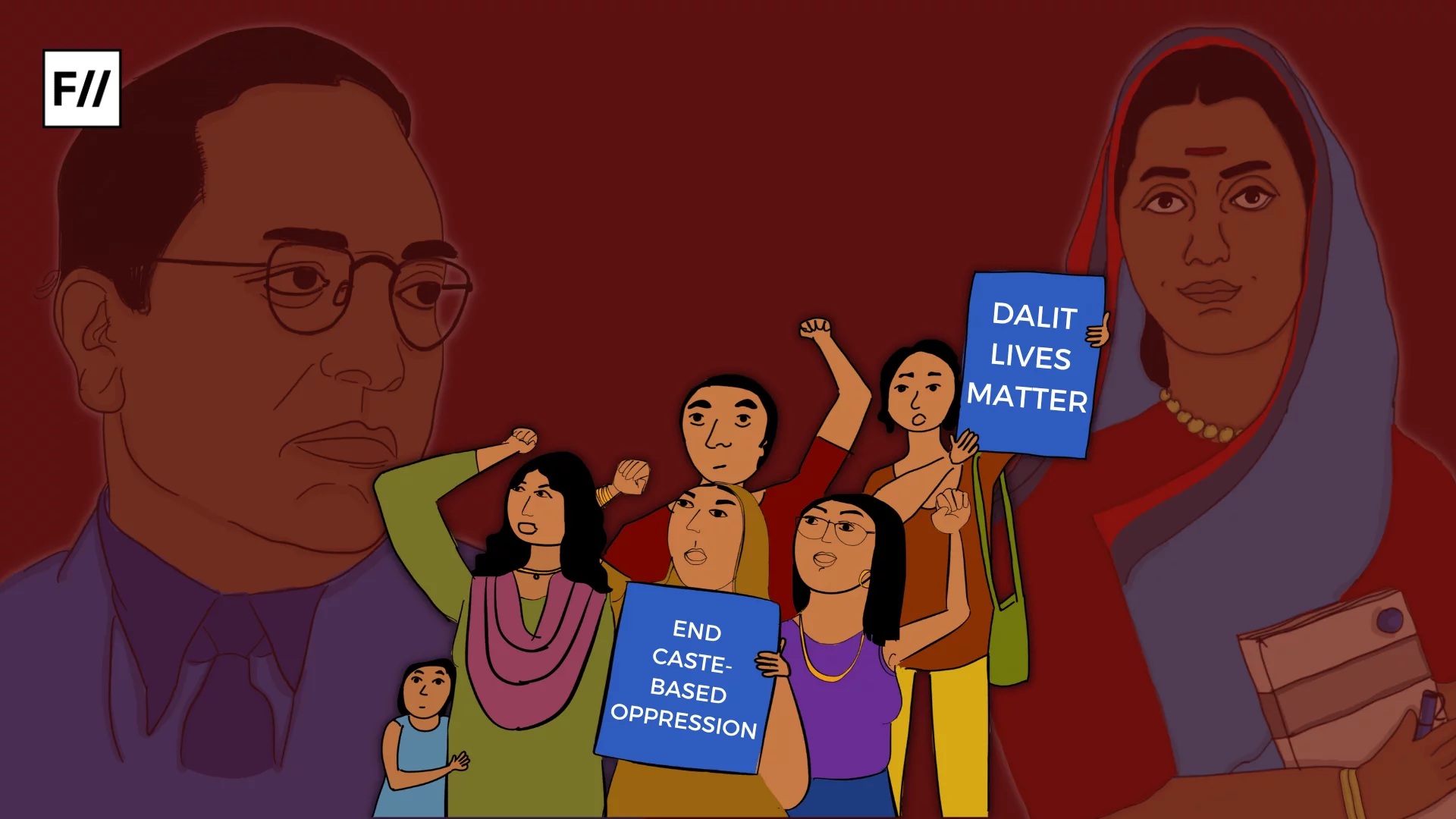Editor’s Note: This month, that is October 2020, FII’s #MoodOfTheMonth is Childhood and Relationship With Parents and Family, where we invite various articles to highlight the different experiences that we all have experienced in some form or the other in our birth or chosen families and have been negotiating with them everyday. If you’d like to share your article, email us at pragya@feminisminindia.com.
Communal violence in India is not a new occurrence: it has shaped our history, our present, our politics, the way we live, the way we perceive one another, and the way our borders came to be formed. It has also shaped how many view my upbringing and in many ways, how I view my upbringing. Being a child to parents in an interfaith marriage meant being raised in a world where I was akin to multiple cultures, beliefs, and understanding of the world. Something that I take to be a beautiful representation of what this country stands for and fought to become.
It also meant being raised in a world that rejected, hated, questioned my upbringing and family lineage. In a country, where personal laws relating to marriage are dealt with by religious laws, one can not help but examine the effects it has on the history and living experiences of people and families in interfaith relationships and ties. From institutions of the state to trolls on the internet: parity and difference have been the abiding norm on how we perceive relationships, raising a family, and our personal filial ties.
Growing up, I took my family life to resemble any other happy and loved family and the relationship between my parents to be like any other relationship. I saw no difference until I was instructed to by everyone else except my family. Suddenly, my roots had become the root of many personal battles on understanding who I was and coming to terms with my identity. So, much of our perception of religion has been embedded and propagated to be understood in terms of parity. It has to be one or the other. You are either this or that and if you fall in the middle, well then you are neither. You are seen as both too much of that and very little of this.
Ever since I was young, I have been asked why my mother was a Muslim, what religion I adhere to and which religion I was raised with. If I spoke of one faith, I was seen as neglecting the other. Picking a ‘side’ in many ways represents abiding the norm of how relationships in a South Asian context are understood through filial and societal responsibilities and validation.
Ever since I was young, I have been asked why my mother was a Muslim, what religion I adhere to and which religion I was raised with. If I spoke of one faith, I was seen as neglecting the other. Picking a ‘side’ in many ways represents abiding the norm of how relationships in a South Asian context are understood through filial and societal responsibilities and validation, maintaining and preserving a caste and/or religious purity, and obeying the social status quo.
Also read: What Is The History Behind ‘Masculine Hindu Hero’ & ‘Virile Muslim…
Interfaith relationships are considered to be rebellious, bringing shame to the family, leading to communal hatred, and defying the sanctity of the personal. Representations of interfaith relationships in India reinstate these sentiments. Interfaith relationships are always presented with both parties knowing that it won’t last, brewing communal hatred, objections from both sides: star-crossed lovers. More times than ever, these relationships end with someone dying, partners cutting ties with their family, or having to leave one another. Even within the context of depicting an interfaith relationship where both parties care and love each other, there are lingering sentiments of violence, disagreement, and ignominy.
I truly have never have seen representation of an interfaith relationship that depicts life, the same way it would have been depicted cinematically for a relationship where both people professed the same religion. Ergo, interfaith relationships and families are never shown and understood beyond the religious label, problems and concerns that every relationship and family experiences. How does that resonate with children of interfaith relationships: are we products of something that can not last, a product of societal intrigue and a cautionary tale? How does that impact the way we perceive interfaith relationships and families if we can never truly get a developed understanding of their relationship beyond communal lines?
Ergo, interfaith relationships and families are never shown and understood beyond the religious label, problems and concerns that every relationship and family experiences. How does that resonate with children of interfaith relationships: are we products of something that can not last, a product of societal intrigue and a cautionary tale?
So, whether an advertisement gets taken down for depicting an interfaith relationship or questions of preserving the religion coming up, I cannot help but feel dejected, defeated, and denied. To not be recognised, to only have your experience spoken in terms of hate and societal objection reinforces parity, our personal laws, and ingrained beliefs of difference.
I have always been proud of my religiously and culturally diverse roots; it has shaped the way that I look at the world and people around me. Being raised in a secular upbringing surrounded by multiple cultures reaffirms just how politicised, imagined, and propagated our differences are. While these imagined differences are institutionalised and lead to systemic oppression that are very real, its defiance speaks to the power of the profound notion that we are not that different, after all. In many ways, my existence, my upbringing speaks to me about the necessity of defiance, defiance in an idea of separation, differences, and hatred that propagates and pollutes us.
Also read: Why ‘Love Jihad’ Is An Attack On Women’s Rights
So, here is my part in painting a picture and understanding interfaith relationships, hopefully in a better light for those that come after me.
Alaya Purewal is a third-year undergraduate student at Sciences Po Paris where she majors in political science and international relations with a regional focus in Europe and Asia. Her interests include reading nihilist poetry, an alarming obsession with true crime, collecting old books, identity politics, dismantling oppressive systems, and trying to understand the world. She also produces a docu-series, s(H)e, that looks at social issues through an intersectional feminist perspective. You can find her on Instagram.





Powerful and an impactful article! Such an important message we all need to give it a read! The diversity and culture in our country has been what we have been taught from a young age to be the greatest achievement and the most beautiful part of it too.
Today, as we see many media outlets and mainstream media, choose and pick their battles on a extremely biased level, we need to reinforce the language of love and solidarity that we as children leart and believed in. In such confusing narratives, we as citizens of this diverse country need to come together and break through these pre-conditioned, prescribed boundaries of love.